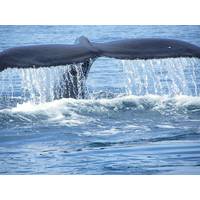
North American Lobster Industry Confronts 'Ropeless' Traps After Whale Entanglements
in 2022 that envisions potential regulations for ropeless technology in coming years, and Canada’s Fisheries department has called ropeless gear “the only way you eliminate the vertical line entanglement risk.”'Drastic over-response'Rob Morris, a product line sales engineer for Edgetech, one of the handful of companies working on ropeless traps, said most of the technical issues around the equipment have been resolved – including reliability, viewing submerged gear on a chart plotter, and avoiding other people’s traps."This is pretty much fully developed,&rdquo
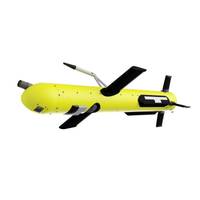
VIDEO: EIVA Launches ViperFish Survey ROTV for Hard-to-reach Areas
control as the industry-leading UXO survey sensor platform, ScanFish. This means that many of ViperFish’s components are proven with thousands of hours documented in the field. In addition, the 3D towed platform is integrated with several high-quality sensor options: Wavefront Solstice MAS, EdgeTech 2205 SSS, R2Sonic MBES, OFG Hypermags Sonardyne SPRINT-Nav Mini and more," EIVA says
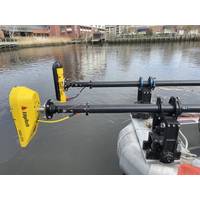
EdgeTech Announces Major Order from ECHO81
EdgeTech said it received a 'significant' order from ECHO81 for its 6205s2 Bathymetry Systems, 4205 & 4125 Side Scan Sonar Systems, 3400-OTS Sub-Bottom Profilers, and 2050-DSS combined Side Scan & Sub-Bottom deep tow systems. The order, valued at more than $2 million, will be available for direct purchases from ECHO81.CHO81 is EdgeTech's exclusive partner and distributor in the U.S. and Latin America for the 6205s2 and 3400 product lines. In late 2022, ECHO81 also purchased EdgeTech's 3000m rated deep tow system, Model 2300, which is equipped with advanced Bathymetry

Reader Feedback: Lander Lab #4 - Underwater Releases
measure 100’s of meters. Net weight of the buoyant lander with a negative anchor weight should be around 40-lbs, so a lightweight capstan will suffice. The capstan should be mounted rigidly to the boat frame to allow for dynamic loading with roll, pitch and heave.From Rob Morris, EdgeTechKevin, please remind your readers that EdgeTech is expanding their code structure to offer additional unique codes for their acoustic releases. The change increases the number of possible commands from 12,000 to 131,000 per tone pair for a total possible 786,000 commands. All new low frequency
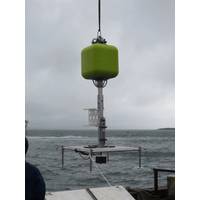
Lander Lab #4: Underwater Releases
, usually batteries, which could be supplemented by compressed air or squib gas generating cartridge.There’s the housing, a sphere or cylinder.Acoustic ReleasesToday many commercial acoustic releases are available.Most commercially available releases come as a fully integrated package, such as the EdgeTech 8242XS. The design allows the in-line load to be taken directly though the release housing. In-line tension is routed around the hydrophone by a heavy metal cage on the top. The cage also serves to protect the ceramic transducer from impact. The transducer is placed on top
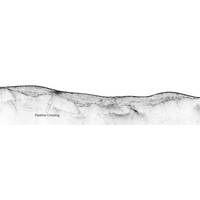
EdgeTech Adds Sub-Bottom Pipeline Survey Mode to the 2050-DSS
EdgeTech added a new feature to the 2050-DSS combined sub-bottom profiling and side scan sonar system. The new Pipeline Survey Mode provides the ability to select a smaller hydrophone sub‐array enabling a larger fore‐aft beamwidth and faster transmission rate and increasing pipeline detection when running crosslines.The 2050-DSS systems use a flat multi-channel Polyvinylidene Fluoride (PVDF) hydrophone array to generate high resolution images of the sub-bottom stratigraphy in oceans, lakes, and rivers and provides excellent penetration in various bottom types. The sub-bottom receiver array is
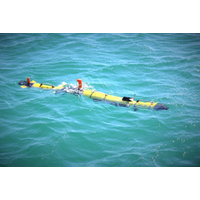
AUVs Deployed for Debris Clearance and Object Detection off Western Australia
executed a debris clearance and object detection survey using its L3 Harris OceanServer Iver-3 autonomous underwater vehicle (AUV) technology.The survey was required ahead of a planned jack-up rig installation next to an operating offshore platform in Western Australia, BOMS said. Equipped with an Edgetech 2205 sonar system the Iver-3 AUV was effective in collecting high-resolution side-scan and bathymetric data with full seafloor coverage within an area of 500m by 500m.According to BOMS, its team was able to demonstrate the technology as fit-for-purpose, cost-effective and practical in collecting
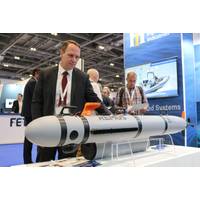
AUV Extravaganza: Tech Advances in Autonomous Underwater Vehicles
;Again, we found that people rarely need to do both (sub-bottom profiling and imagery) at the same time,” says Mills. “So to keep the size down, we designed this payload module that simply plugs into the same BUS that everything else is on.” This is also fixed, however, with a choice of EdgeTech or potentially GeoAcoustics GeoPulse Compact sub-bottom profiler and a CathX still image camera. The result is a price tag starting at just under $2 million, compared with $3 million and up for a 3,000m-rated HUGIN. The HUGIN Edge is also getting a new Kongsberg forward looking sonar (FLS)
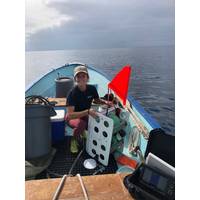
Lander Lab #2: Small Autonomous Landers for Studying the Community Ecology of Nearshore Submarine Canyons
study nearshore submarine canyons.LandersTwo low-cost, spatially flexible autonomous lander systems were used: a Global Ocean Design® LLC Nanolander® Deep Ocean Vehicle (DOV) BEEBE and Picolander® DOV LEVIN (Fig. 2). The Nanolander has three spherical housings containing a camera system, an EdgeTech® BART© (Burnwire Acoustic Release Transmitter) acoustic communication system. A Zebra-Tech™ <www.zebra-tech.co.nz> Moana© sensor is mounted to the frame for measuring temperature and depth. The smaller, two-sphere Picolander is equipped with a Zebra-Tech sensor, camera



 February 2024
February 2024





